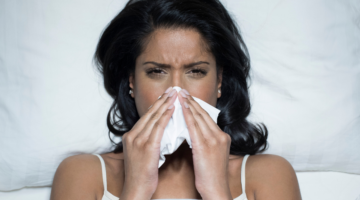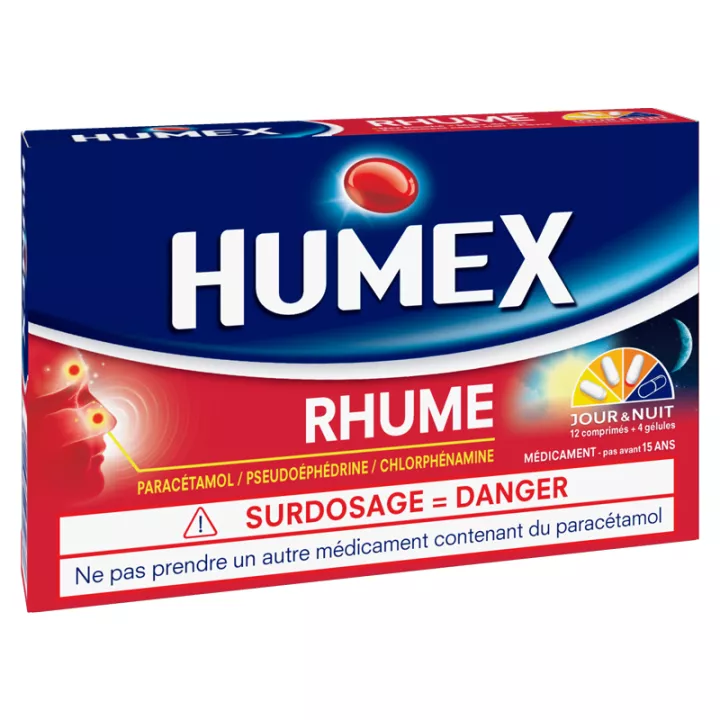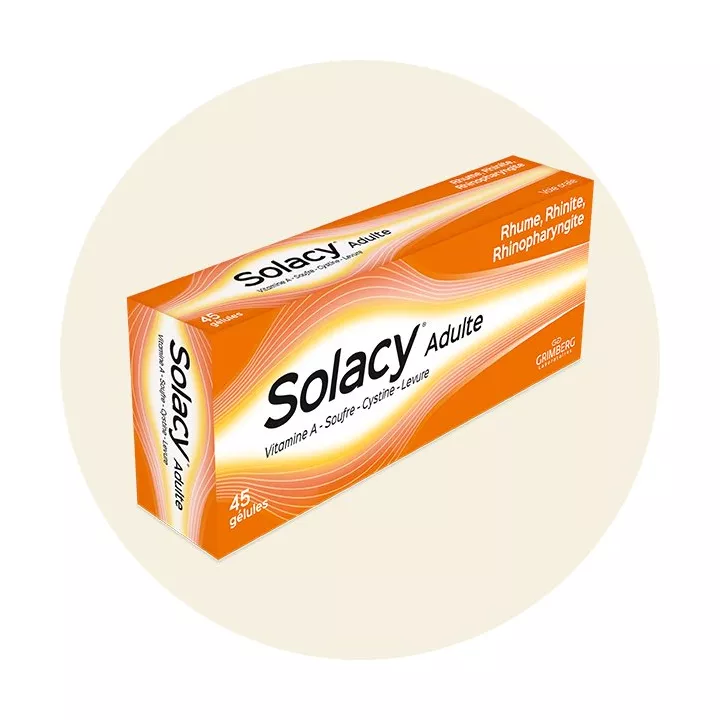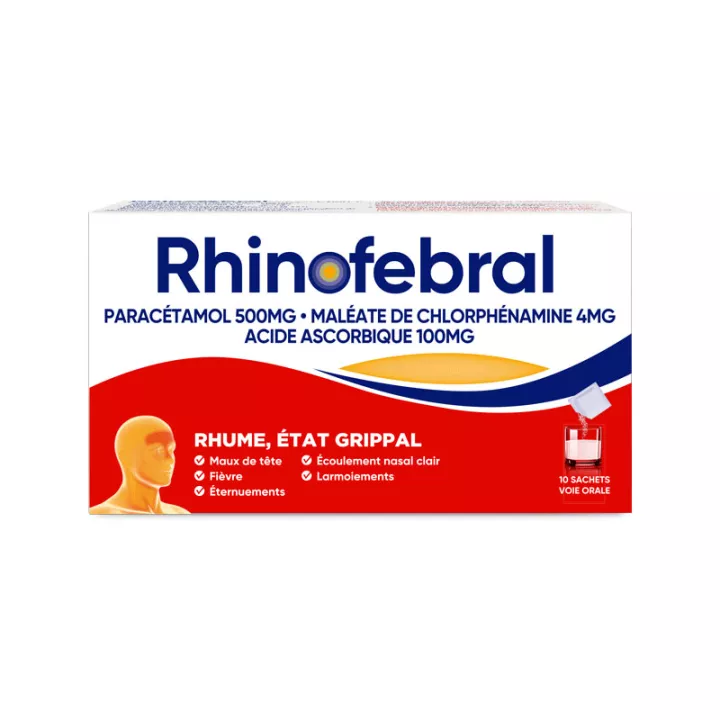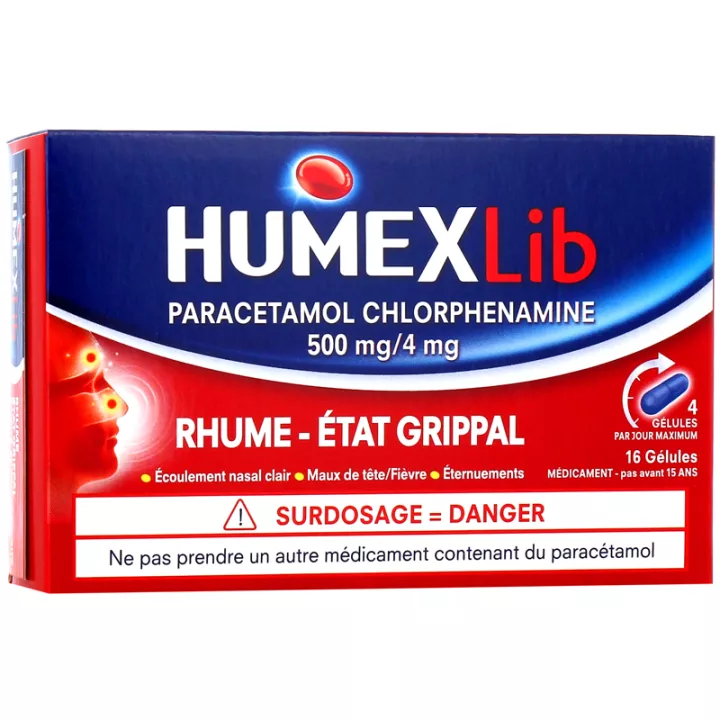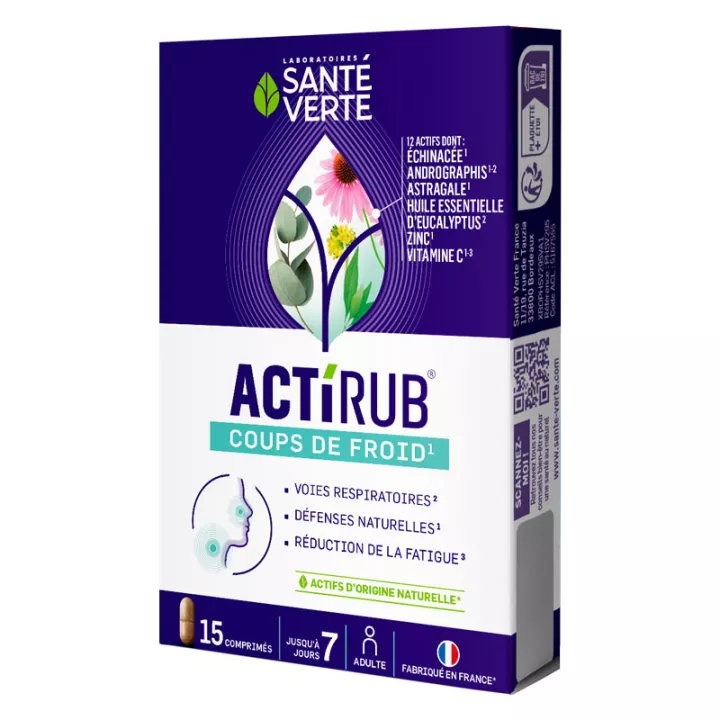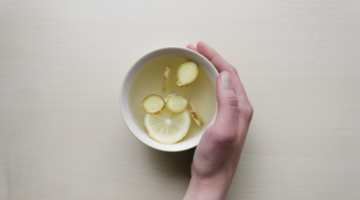NOTICE
ANSM - Updated: 11/07/2019
Name of the drug
HUMEX COLD, tablet and capsule
Paracetamol pseudoephedrine hydrochloride, chlorphenamine maleate
framed
Read all of this leaflet carefully before you start taking this medicine because it contains important information for you.
You should always take this medicine exactly as described in this leaflet or by your doctor or pharmacist.
· Keep this leaflet. You might need to read it again.
· Talk to your pharmacist for any advice or information.
· If you get any side effects, talk to your doctor or pharmacist. This also applies to any undesirable effects that are not mentioned in this leaflet. See section 4.
· You should talk to your doctor if you do not feel better or feel worse after 4 days.
What does this booklet contain ?
1. What is HUMEX COLD, tablet and capsule and when is it used?
2. What you need to know before taking HUMEX COLD, tablet and capsule?
3. How to take HUMEX COLD, tablet and capsule?
4. What are the possible side effects?
5. How to store HUMEX COLD, tablet and capsule?
6. Contents of the package and other information.
1. WHAT HUMEX COLD, tablet and capsule AND WHAT IT IS USED FOR
Pharmacotherapeutic group: DECONGESTANTS FOR SYSTEMIC USE, ATC code: R01BA52 .
This medication contains a vasoconstrictor nasal decongestant (pseudoephedrine), an antihistamine (chlorphenamine) and an analgesic (paracetamol).
This medication is indicated for the treatment of colds in adults and adolescents over 15 years of age:
· feeling of stuffy nose,
· clear nasal discharge,
· headache and / or fever.
You should talk to your doctor if you do not feel better or feel worse after 4 days.
2. BEFORE YOU TAKE HUMEX COLD, tablet and capsule?
Do not take HUMEX COLD, tablet and capsule:
· In the event of a history of allergy to the constituents of the product, especially antihistamines.
· Children under 15 years old.
· If you have had a stroke.
· In case of severe or poorly balanced high blood pressure.
· In case of serious heart disease (coronary heart disease).
· If you have some forms of glaucoma (increased pressure in the eye).
· In case of difficulty in urination of prostatic origin or other.
· In case of old or recent convulsions.
· In case of serious liver or kidney disease due to the presence of paracetamol.
· If you are breastfeeding
· In combination with non-selective MAOIs due to the risk of paroxysmal hypertension and potentially fatal hyperthermia.
· In combination with other indirect-acting sympathomimetics: vasoconstrictors intended to decongest the nose, whether administered orally or nasally [phenylephrine (aka neosynephrine), pseudoephedrine, ephedrine] and methylphenidate, due to the risk of vasoconstriction and / or hypertensive outbreaks.
· In combination with alpha-like sympathomimetics: vasoconstrictors intended to decongest the nose, whether administered orally or nasally [etilefrine, midodrine, naphazoline, oxymetazoline, phenylephrine (also known as neosynephrine), synephrine, tetryzoline, tuaminoheptane, tymazoline], because of the risk of vasoconstriction and / or hypertensive relapses.
The combination of two decongestants is contraindicated, regardless of the route of administration (oral and / or nasal): such an association is unnecessary and dangerous and corresponds to misuse. |
You should not usually use this medicine unless your doctor tells you otherwise during pregnancy.
IN CASE OF DOUBT, IT IS ESSENTIAL TO ASK THE ADVICE OF YOUR DOCTOR OR PHARMACIST.
Warnings and precautions
Talk to your doctor or pharmacist before taking HUMEX COLD, tablet and capsule .
Precautions for use
If you have severe liver or kidney disease, you should consult your doctor before taking this medicine (due to the presence of paracetamol).
This medication can cause drowsiness increased by alcohol: it is better to start the treatment at night and abstain from alcoholic beverages during the course of treatment.
In case of purulent nasal discharge, persistence of fever, lack of improvement after 4 days of treatment, CONSULT YOUR DOCTOR.
IF IN DOUBT, DO NOT HESITATE TO ASK FOR THE ADVICE OF YOUR DOCTOR OR PHARMACIST.
Special warnings
DO NOT LEAVE THIS MEDICINE WITHIN THE REACH OF CHILDREN.
· It is imperative to strictly adhere to the dosage, the duration of treatment of 4 days, and contraindications.
· In case of overdose or mistakenly taking a high dose, consult your doctor immediately.
This medicine contains paracetamol. Other medicines contain it. Do not combine them so as not to exceed the recommended daily dose (see dosage section). |
· During the treatment, in case of feeling of accelerated heart beat, palpitations, appearance or increase of headache, nausea, behavioral disorders, stop treatment and immediately contact your doctor. doctor.
· Sudden abdominal pain or bleeding from the anus may occur with HUMEX COLD, tablet and capsule, following inflammation of the colon (ischemic colitis). If you develop these gastrointestinal symptoms, stop taking HUMEX COLD, tablet and capsule and contact your doctor or seek medical advice immediately. See section 4.
PREVENT YOUR DOCTOR, if you suffer:
· high blood pressure,
· cardiac disorders, hyperthyroidism (hyperfunctioning of the thyroid gland),
· personality disorders,
· of diabetes,
· predisposition to constipation, vertigo and urinary disorders.
PREVENT YOUR DOCTOR, if you take:
· a selective MAO-A (moclobemide, toloxatone),
· a treatment containing an alkaloid of ergot of rye:
o dopaminergic, such as bromocriptine, cabergoline, lisuride or pergolide (eg antiparkinsonian),
o vasoconstrictor, such as dihydroergotamine, ergotamine, methylergometrine, methysergide, (for example an antimigraine),
· of linezolid.
Other medicines and HUMEX COLD, tablet and capsule
Tell your doctor or pharmacist if you are taking, have recently taken or might take any other medicines.
This medicine contains a vasoconstrictor, pseudoephedrine.
This medication should not be administered in combination with:
· other vasoconstrictors whether administered orally or nasally (phenylephrine (aka neosynephrine), pseudoephedrine, ephedrine, methylphenidate, etilefrine, midodrine, naphazoline, oxymetazoline, synephrine, tetracycline, tuaminoheptane, tymazoline),
· a non-selective MAO-A (iproniazide).
It is not recommended to use this medicine if you are already treated:
· by a selective MAO-A drug, a drug prescribed in certain depressive states,
· and / or other dopaminergic or vasoconstrictor drugs such as bromocriptine, cabergoline, lisuride, pergolide or dihydroergotamine, ergotamine, methylergometrine, methysergide, drugs prescribed to treat certain neurological or endocrine disorders or migraines ,
· by linezolid.
Report that you are taking this medicine if your doctor prescribes a dosage of uric acid or blood sugar.
In order to avoid the harmful effects of an overdose, DO NOT ASSOCIATE WITH MEDICAL ADVICE other medicines containing vasoconstrictors, paracetamol or antihistamines. IF IN DOUBT, DO NOT HESITATE TO ASK FOR THE ADVICE OF YOUR DOCTOR OR PHARMACIST. |
HUMEX COLD, tablet and capsule with food, drink and alcohol
Refrain from alcoholic beverages during the course of treatment.
Pregnancy and breast feeding
If you are pregnant or breast-feeding, think you may be pregnant or are planning to have a baby, ask your doctor or pharmacist for advice before taking this medicine.
Pregnancy
Taking this medicine is not recommended during pregnancy.
feeding
Due to possible adverse effects in infants, taking this medicine is contraindicated if you are breastfeeding.
Sport
Athletes, attention: this specialty contains an active ingredient (pseudoephedrine) that can induce a positive reaction of tests performed during doping controls.
Driving and using machines
Attention is drawn to the risks of drowsiness or loss of alertness associated with the use of this medication, especially for vehicle drivers and machine users.
This phenomenon is accentuated by the intake of alcoholic beverages or drugs containing alcohol.
HUMEX COLD, tablet and capsule contains <{name the excipient (s)}>
Not applicable.
3. HOW TO TAKE HUMEX COLD, tablet and capsule?
Always take this medicine exactly as your doctor or pharmacist has told you. Check with your doctor or pharmacist if you are not sure.
Dosage
RESERVED FOR ADULTS AND ADOLESCENTS OVER 15 YEARS OLD.
· 1 tablet Day (white) in the morning, to renew, if necessary, at noon and dinner,
· 1 night capsule (blue and white) at bedtime,
respecting an interval of at least 4 hours between each shot.
Do not exceed the maximum dosage of 3 tablets Day and 1 capsule Night in 24 hours.
In case of severe kidney disease (severe kidney failure), space the catch for at least 8 hours.
If you feel that the effect of this medicine is too strong or too weak, talk to your doctor or pharmacist.
IF IN DOUBT, ASK YOUR DOCTOR OR PHARMACIST.
Method and route of administration
Oral way.
Swallow the tablet or capsule with a large glass of water.
Duration of treatment
The duration of use is limited to 4 days. In the absence of improvement as in case of persistent symptoms beyond 4 days of treatment, take medical advice.
If you take more HUMEX COLD, tablet and capsule than you should:
In case of accidental overdose or intoxication, STOP THE TREATMENT AND CONSULT YOUR DOCTOR IMMEDIATELY.
If you forget to take HUMEX COLD, tablet and capsule:
Do not take a double dose to make up for the single dose you forgot to take.
If you stop taking HUMEX COLD, tablet and capsule:
Not applicable.
If you have any further questions about the use of this medicine, ask your doctor or pharmacist for more information.
4. WHAT ARE THE POSSIBLE SIDE EFFECTS?
Like all medicines, this medicine can cause side effects, although not everybody gets them.
Due to the presence of pseudoephedrine , this drug may result in:
· General effects such as:
o headaches, strokes,
o palpitations, high blood pressure, myocardial infarction, sweating, behavioral disturbances, nausea, vomiting,
o inflammation of the colon due to insufficient blood supply (ischemic colitis),
o the onset of an acute glaucoma attack in susceptible subjects that may result in a red and painful eye.
IN THESE CASES, STOP THE TREATMENT AND CONTACT YOUR DOCTOR IMMEDIATELY.
· May also occur:
o allergic manifestations,
o urinary disorders (significant decrease in urine, difficulty urinating),
o a dry mouth,
o seizures, hallucinations, agitation, behavioral disturbances and insomnia have been described especially in children,
o memory or concentration problems, confusion, vertigo (more common in the elderly),
o motor incoordination, tremors,
o drowsiness, decreased alertness, more marked at the beginning of treatment,
o allergic reactions:
§ rash type (redness, itching, hives, eczema),
§ Quincke's edema (sudden swelling of the face and neck may cause difficulty breathing),
§ anaphylactic shock (violent and very severe allergic reaction),
o a drop in blood pressure when standing up, which may be accompanied by vertigo,
o more rarely, changes in the blood count have been described with antihistamines,
o exceptionally, hemorrhagic strokes have been reported in patients treated with vasoconstrictor-containing medicinal products, including overdose, non-compliance with contraindications or warnings, or in patients with vascular risk factors (see 2. BEFORE YOU TAKE HUMEX COLD, tablet and capsule, subheadings: "Do not take HUMEX COLD, tablet and capsule in the following situations," "Special warnings" and "Precautions" employment).
IN THESE CASES, STOP THE TREATMENT AND CONTACT YOUR DOCTOR IMMEDIATELY.
Due to the presence of paracetamol:
· In rare cases, it is possible that a rash or redness of the skin or an allergic reaction may occur, such as sudden swelling of the face and neck, or sudden discomfort with a drop in blood pressure. Stop taking the medication immediately, tell your doctor, and never take any medicine containing paracetamol again.
· Exceptionally, biological changes requiring a blood test have been observed: abnormally low levels of certain blood elements (platelets) can result in bleeding nose or gums. In this case, consult a doctor.
Declaration of side effects
If you get any side effects, talk to your doctor or pharmacist. This also applies to any undesirable effects that are not mentioned in this leaflet. You can also report side effects directly via the national reporting system: National Agency for the Safety of Medicines and Health Products (ANSM) and the network of Regional Pharmacovigilance Centers - Website: www.signalement-sante.gouv.fr
By reporting side effects, you can help provide more information on the safety of the medicine.
5. HOW TO STORE HUMEX COLD, tablet and capsule?
Keep this medicine out of the sight and reach of children.
Do not use this medicine after the expiry date which is stated on the carton. The expiry date refers to the last day of this month.
This medication should be stored away from moisture.
Do not dispose of any medication in the sewage system or garbage. Ask your pharmacist to eliminate medications you no longer use. These measures will help protect the environment.
6. CONTENTS OF PACKAGING AND OTHER INFORMATION
What HUMEX RHUME contains, tablet and capsule
· The active substances of the tablet (for the Day) are:
Paracetamol................................................. .................................................. ............ 500.0 mg
Pseudoephedrine hydrochloride ............................................... .................................. 60.0 mg
For a tablet.
· The active substances of the capsule (for the Night) are:
Paracetamol................................................. .................................................. ............ 500.0 mg
Chlorphenamine maleate ............................................... .............................................. 4.0 mg
For a capsule.
· The other components of the tablet (for the day) are:
Microcrystalline cellulose, pregelatinized starch, croscarmellose sodium, magnesium stearate, povidone K30.
· The other components of the capsule (for the Night) are:
Talc, croscarmellose sodium, sodium lauryl sulphate, anhydrous colloidal silica.
Composition of the capsule shell:
Titanium dioxide, erythrosine, indigotine, gelatin.
What HUMEX COLD, tablet and capsule and contents of the pack
This medicine comes in tablet and capsule form.
· Box of 6 tablets and 2 capsules.
· Box of 9 tablets and 3 capsules.
· Box of 12 tablets and 4 capsules.
Not all presentations may be marketed.
Marketing Authorization Holder
URGO HEALTHCARE LABORATORIES
42 LONGVIC STREET
21300 CHENOVE
LA FRANCE
Operator of the marketing authorization
URGO HEALTHCARE LABORATORIES
42 LONGVIC STREET
21300 CHENOVE
LA FRANCE
Maker
URGO LABORATORIES
AVENUE OF STRASBOURG
ZONE EXCELLENCE 2000
21800 CHEVIGNY-SAINT-SAUVEUR
LA FRANCE
Names of the medicine in the member states of the European Economic Area
Not applicable.
The last date this leaflet was revised is:
[to be completed later by the holder]
Other
Detailed information on this medicine is available on the ANSM website (France).
Health Education Council:
"WHAT TO DO IN CASE OF NOSE MOUTH OR NOSE WHICH COULE":
This medication is used in the treatment of a stuffy nose and / or headache during colds in adults and adolescents over 15 years of age.
The common cold is a very common acute infection that affects the nasal mucosa (inner lining of the nose). This mucosa secretes a liquid whose role is to permanently humidify the inspired air and fight against infectious agents. When this mucosa is irritated, it swells and increases its habitual secretion of liquid, so that the nose "is clogged" or that the nose "flows".
In order to limit the appearance of symptoms, respect as much as possible, the following hygiene rules:
· wash your hands regularly, especially before meals or when preparing them;
· cover your mouth when you cough or sneeze
· blow your nose often with disposable tissues (to avoid recontaminating yourself) and throw them in a garbage can immediately after use, then wash your hands;
· avoid visiting a young woman and her newborn, an elderly person, or a person treated with immunosuppressants (corticosteroids, medicines for a blood disease or cancer ...). In these cases, mask wearing is recommended.
For your comfort :
· to drink enough;
· moisten the nasal mucosa with suitable washing solutions (physiological saline, sprays of thermal water or seawater);
· avoid smoking or breathing other people's smoke;
· sleep with your head elevated to improve the flow of air through clogged nostrils and get enough sleep;
· protect the skin of the upper lip and nostrils with a cream if necessary because the repetition of the blemishes tends to irritate the skin;
· avoid air conditioners that dehumidify the air and dry the nasal mucous membranes, the ideal temperature of the room should be around 18-20 ° C;
· aerate regularly the pieces.
"WHAT TO DO IN CASE OF FEVER":
The normal body temperature is variable from one individual to another and ranges from 36.5 ° C to 37.5 ° C. An elevation of more than 0.8 ° C is considered a fever.
In adults and adolescents over the age of 15 : if the problems they cause are too troublesome, you can take a medication that contains paracetamol at the dosages indicated.
With this medicine, the fever should drop quickly. Nevertheless :
· if other signs appear (such as a rash),
· if the fever persists for more than 3 days or if it worsens,
· if the headaches become violent, or in case of vomiting,
CHECK YOUR DOCTOR IMMEDIATELY.
